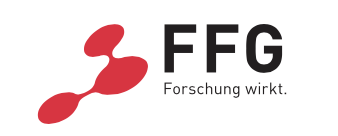- About us
- Research expertise
- DIGITAL – Institut für Digitale Technologien
- MATERIALS – Institut für Sensorik, Photonik und Fertigungstechnologien
- ROBOTICS – Institut für Robotik und Flexible Produktion
- COREMED – Zentrum für Regenerative Medizin und Präzisionsmedizin
- HEALTH – Institut für Biomedizinische Forschung und Technologien
- LIFE – Institut für Klima, Energiesysteme und Gesellschaft
- POLICIES – Institut für Wirtschafts-, Sozial und Innovationsforschung
- Business areas
- Products & services
- Research infrastructure
- Beteiligungen
- Career
- Aktuelles
- Publications
- Kontakt zu uns
SmartMowAI
RUNNING TIME:
10/2024
—
09/2027
Total project duration:
3 Years

Credit: STED/Land Steiermark
The project
The main objective of SmartMowAI is to research and develop technologies which allow to monitor the meadow state along large road networks, to use meadow state information to devise an optimized mowing strategy for the entire road network, and to validate the researched technologies and methods through a proof of concept for optimized mowing on the Styrian road network. This is done together with our partners Pentamap, biohelp and Straßenerhaltungsdiensten Steiermark.
Our activities in the project
The tasks of JOANNEUM RESEARCH in the project are on the one hand data acquisition, which includes an extension of the existing sensor platform, and on the other hand the development of deep learning methods for recording the condition of meadows along roads, including classification of the phenological condition. In terms of artificial intelligence, we are mainly researching semantic segmentation, multi-task learning and resource-efficient AI in the project.
Research groups
Downloads
Customers
Bundesministerium für Klimaschutz, Umwelt, Energie, Mobilität, Innovation und Technologie
vertreten durch die Österreichische Forschungsförderungsgesellschaft mbH (FFG)
Project partners
pentamap
biohelp
STED - Straßenerhaltungsdienste Steiermark
Project details
There are around 128.000 km of roads in Austria. The road maintainers have the legal task of keeping the vicinity of roads free of endangering vegetation, an essential and cost-intensive task. Considering both sides of the road this results in about 260.000 mowing kilometres for the Austrian road maintenance services. Furthermore, there is a legal obligation to progressively replace current fossil mowing vehicles by zero-emission vehicles till 2030.
Today, there is no way to get an overview of the current state of the meadows along the entire road network. In order to ensure legal requirements, today this results in regular, high-frequency mowing, even though this is not required on large sections of the road network. Urgent mowing decisions are made by maintenance personnel on the basis of very local observations, resulting in mowing vehicles driving back and forth across the large road network to fulfill these urgent mowing tasks. The lack of information about the meadow state along the entire road network leads to non-optimal use of resources (increased CO2 emissions, working time, number of mowing vehicles, etc.).
The main objective of SmartMowAI is to research and develop technologies which allow to monitor the meadow state along large road networks, to use meadow state information to devise an optimized mowing strategy for the entire road network, and to validate the researched technologies and methods through a proof of concept for optimized mowing on the Styrian road network.
SmartMowAI explores novel adaptive learning and situational AI algorithms for the automated detection of relevant intensive and extensive mowing areas along roads and cycle paths, and for the classification of these mowing areas with respect to their phenological state (the state of development of meadow plants over the entire vegetation period), as well as various approaches for optimising the resource efficiency of the AI algorithms. The data collection required for the AI research within the project, and later for the operational monitoring of the meadow condition, will be carried out by road maintenance vehicles as part of their regular operations, resulting in no additional emissions.
Based on the phenological state of intensive and extensive mowing areas an optimized mowing strategy for the entire road network is devised, resulting in the following benefits:
- Reducing the number of mowing cycles, using fewer vehicles, and avoiding short-term use of mowing vehicles significantly reduces the associated CO2 emissions and working time
- Enable the use of zero-emission mowing vehicles (as their range is limited).
- Increasing the biodiversity of meadows through later and less frequently mowing.
- Ensuring visibility to avoid traffic accidents at crossroads, entrances, bends, areas with high wildlife traffic.
- Leaving traffic signs, delineators, cycle paths, and wildlife warning devices unobstructed.
- Ensuring the road drainage functions.
SmartMowAI results in novel adaptive learning and situational AI methods for the segmentation and state classification of roadside meadows and through that will provide the base for future market-ready solutions needed for the mobility transformation for biodiversity optimized mowing scheduling, enabling the use of zero-emission mowing vehicles in the first place.
The SmartMowAI project builds on the experience and results of FloraMon.
Projektbeteiligte
Related projects
SHAPING THE FUTURE, TOGETHER
JOANNEUM RESEARCH provides innovation and technology services in the field of applied research. As a research company working on behalf of various federal provinces and regions in Austria, our expertise shapes the development of our modern society and economy – sustainably, and always with a focus on people. As a multidisciplinary team working in a flexible set-up that fosters innovation, we always live up to the highest social and scientific standards.



